
モーラ・オハラン(Maura O’Halloran)
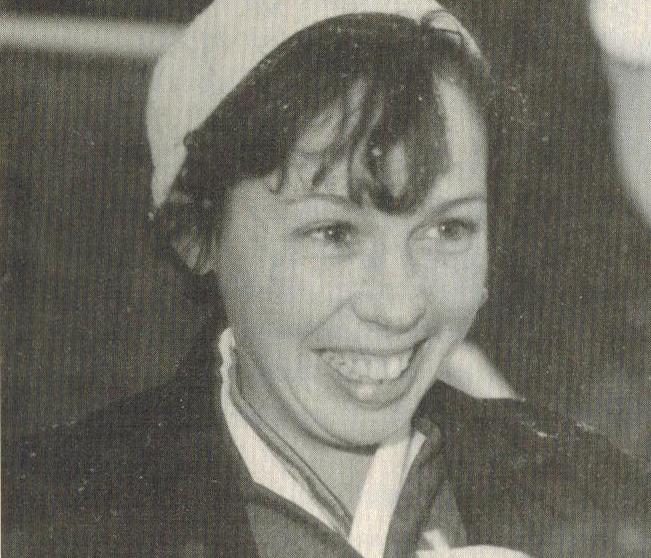
伴鉄牛老師の弟子で、戒名は「祖心」。1955年5月24日、マサチューセッツ州ボストンに生まれる。4歳の時、アイルランドに移り住み、大学までダブリンで過ごす。 大学では、アイルランド最高の奨学金を得ながら、自閉症児や発達障害のある子どもの世話をしたり、薬物中毒者やダブリンの貧しい人々へのボランティアにも従事していた。 1977年の夏、アメリカに戻り、カナダのトロントへ行き、いくつかの職場で働き、大陸横断旅行の資金を得て、サンフランシスコに向かう。 その後、1978年の4月からメキシコ、中南米のほとんどを回り、英語を教えてスペイン語を学ぶ旅行をし、1987年のクリスマスにメイン州に戻る。 また、ボストンでは反核運動に積極的に取り組み、写真の勉強を続けたりもしていた。 1979年東京の東照寺で得度、岩手県観音寺などで3年間の修行を経て、1982年、允可を得る。その後、タイに行き、現地で布教活動中、バス事故により亡くなる。 現在、観音寺内にモーラ観音として、人々の信仰を集め、お祀りされている。また、彼女の著作「Pure Heart, Enlightened Mind」は観音寺などでの修行生活を描いたものであり、 ミュージシャンやアーティスト、ドキュメンタリー作家など、今なお多くの外国人に影響を与えている。
She is a disciple of Ban Roshi, and she is named "soshin". She was born in Boston, Massachusetts on May 24, 1955. She moved to Ireland at the age of 4 and spends her time in Dublin until college. At college she was taking care of autistic children and children with developmental disorders, and volunteers to drug addicts and poor people in Dublin, while earning the best scholarship in Ireland. In the summer of 1977, she returned to America, went to Toronto, Canada, worked in several workspaces, earned money for cross-continental journey, headed for San Francisco. Later, she traveled around Mexico, Latin America mostly from April 1978, traveled to learn Spanish by teaching English, and returned to Maine state at Christmas in 1987. Also, in Boston, she actively worked on antinuclear movement and continued studying photography. She became monk at Toshoji Temple in Tokyo in 1979, three years of training at Kanonji Temple in Iwate Prefecture, etc. In 1982, she achieved enlightment. After that, she went to Thailand and died due to a bus accident while missionary work in the field. Currently, in honor of her, as a Maura Kannon within Kanonji Temple, many people's faith is gathered and prayed. In addition, her work "Pure Heart, Enlightened Mind" depicts the traning life at Kanonji etc., and still influences many foreigners such as musicians, artists, and documentary writers.
Pure Heart, Enlightened Mind written by Maura O’Halloran
“A remarkable record of a life fully lived. A unique and inspiring and even heartbreaking book.
As a writer, Maura O’Halloran can’t help but communicate.” – Commonweal
“Many have gone to the East in search of enlightenment but none has told the story as vividly and
honestly as Maura O’Halloran. Her legacy to us is this marvelous book.”
-Melvin McLeod, Editor-in-Chief of Shambhala Sun


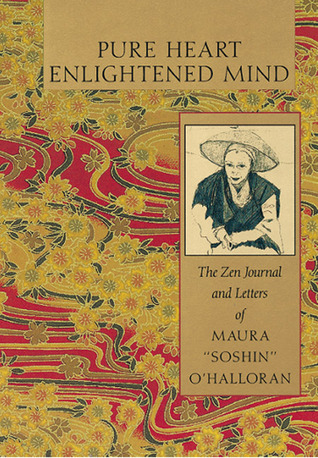
Preface to the Original Edition
In creating this book, we have struggled to determine how best to present
these letters and journals of Maura Soshin O’Halloran. Journals are
inherently incomplete things, for the most fundamental issues of a life
or an experience are understood by the writer and are often unwritten.
Because of this, Maura’s journals present us with many questions that
remain unanswered—why did she want to study Zen, why did she go to
Japan, what elements of her Catholic upbringing led her to Buddhism?
We asked Maura’s family and the people with whom she studied and,
ultimately, the only answers are here in these pages before you. Maura
never intended this material to be published.Whatever questions we may
have after reading these, her most personal thoughts, are not questions
that were most important to Maura. What was important to her was that
she become a Zen monk and be able to help other people in some way.
This is what mattered to her.
Japanese words are used throughout the text. The first time a Japanese
word appears it will be printed in italics with an explanation and
placed in the glossary. It will be romanized thereafter.
We wish to acknowledge Ruth O’Halloran’s dedication in transcribing
her daughter’s writings for publication. She was helped by Kate,
Jane, Scott, and Beth O’Halloran. I wish to thank
Tetsugyu Ban, Tessaisan,
and Shiro Tachibana for welcoming me to
Kannonji Temple and
transmitting to me their love for Maura-san. I am also grateful to
Paul Silverman, Lorette Zirker,
and Dai-en Bennage for their insight and editorial guidance.
This book is dedicated to Maura Soshin O’Halloran.
—Michael Kerber
Introduction
In a small Buddhist monastery in northern Japan there stands a statue
of a young Irish-American woman who lived there in the early 1980s.
 During her three years of Zen training in Iwate and Tokyo she was known
as Maura-san, or by her monastic name of Soshin-san. She received the
transmission of her teacher in 1982 and was killed in a bus accident in
Thailand six months later. In 1983, as her mother, I was invited to Japan
for the dedication of her Kannon statue, an indication that she had
become identified in the minds of local people with the bodhisattva Kannon,
the Buddhist saint of compassion.
During her three years of Zen training in Iwate and Tokyo she was known
as Maura-san, or by her monastic name of Soshin-san. She received the
transmission of her teacher in 1982 and was killed in a bus accident in
Thailand six months later. In 1983, as her mother, I was invited to Japan
for the dedication of her Kannon statue, an indication that she had
become identified in the minds of local people with the bodhisattva Kannon,
the Buddhist saint of compassion.
Her last photo, taken in front of a Japanese temple, shows a tall, blueeyed,
black-robed young woman of twenty-seven, with a radiant smile.
How did this daughter of an American mother and an Irish father, educated
at convent schools and Trinity College, Dublin, become not only a
Zen monk but a Buddhist saint?
Maura O’Halloran was born on May 24, 1955, in Boston, Massachusetts,
the eldest of six children. Her father, Fionan Finbarr O’Halloran,
was a native of County Kerry, Ireland, and I a native of Maine. When
Maura was four years old we moved to Ireland. Her earliest schooling
was at Loretto convents in County Dublin. She briefly attended the
same school that Mother Teresa had and had hoped to meet her
when she went to India after her travels in Thailand. Maura had expressed
an intention of doing work similar to Mother Teresa’s, among the poor
of Dublin.
We returned to Boston in 1966, living in suburban Waban while my
husband did graduate work in civil engineering at M.I.T. He was killed in
a road accident in 1969 and the entire family returned to Dublin in 1970.
In her journal, Maura never mentions the fact of her birth and youth
in Boston, but her New England background, and especially her grandmother
in Maine, contributed as much to her formation as did her fourteen
years in Ireland. Her position as the eldest child, flung into the role
of second parent to five younger siblings at her father’s sudden death,
hastened a maturity that few adolescents experience.
After receiving high honors in her Leaving Certificate from her secondary
school in Ireland, she gained early acceptance at Trinity College,
Dublin, where she matriculated in 1973. In 1975 she received Ireland’s
highest scholastic award, which provided for all her educational
expenses. While in college she did much volunteer social work, especially
with drug addicts and the very poor of Dublin. She spent the summer of
1976 at the Rudolph Steiner School in Glencraig,Northern Ireland,where
she cared for autistic and developmentally disabled children.
Her highly developed sense of the need for social justice sometimes
made her impatient with institutional obstacles to human development.
This point of view found an outlet in college protests, volunteer social
work, union organizing (she antagonized the management of a restaurant
in which she worked in Dublin by attempting to organize the staff
into a union), and what I can only call a sort of spontaneous poverty.
The latter attitude led to such a detachment from material things, especially
fashionable clothing, that she often appeared genuinely shabby
(years before the vogue for “shabby chic”). She deliberately limited herself
to a very stringent budget.
Over her college vacations she made a series of journeys through Greece,
Italy, North Africa, France, and the United Kingdom. In the summer of
1977 she returned to the United States and then went to Toronto, Canada,
where she worked at several jobs to earn money for cross-continental travel.
She drove with friends across Canada, then worked her way down
the west coast until she arrived in San Francisco. There she worked at several
jobs simultaneously (waitress, hotel desk clerk, telephone operator,
and research assistant). She also studied photography and Spanish to prepare
for a major trip through Latin America.
Describing this trip, she says:
Starting in April 1978, I traveled through Mexico, Central America, and
most of South America, remaining in Cuzco, Peru, for almost five months
where I taught English and improved my Spanish. [She also did volunteer
work in Cuzco.] My lifestyle while traveling brought me into contact with
people from every social level. I hitchhiked, walked, or traveled second-class,
as did the Indians. People, from local campesinosto wealthy hacienda owners,
continually showed me hospitality, bringing me to their homes and talking
for long hours about their lives, problems, politics, and ambitions.
She ventured as far south as Punta da Arenas and flew back from Santiago,
Chile, arriving in Maine in the midst of a blizzard on Christmas
Day 1978.
After a visit with her family, who had moved back to Maine from Ireland
earlier in 1978, she went to Boston where she lived in a studio apartment
on Bromfield Street while working at a Cambridge restaurant to
finance her proposed trip to the Orient. In Boston she became active in
the anti-nuclear movement and continued her study of photography,
which culminated in a one-man show of her work in 1979. Her interest
in Japan had been aroused by the enthusiasm of the family’s old friend
and solicitor in Ireland, Frank Sweeney, and by her own long-term interest
in meditation. In our Dublin home in the early 1970s one often came
upon her in some corner, sitting in the lotus position, calmly centered
within herself, oblivious to phone, TV, and family. She had the ability to
focus cheerfully and totally on whatever she did, and I have no doubt
that this was partly the result of her habit of meditation.
In Boston, where Maura was born, or in Dublin, where she spent her
youth and college years, little was known about her experience as a Zen
monk until a documentary of her life, Maura: A Japanese Journey, was
produced for Irish national television in 2002. This film was based principally
on the English-language edition, published in 1994, of the journals
and letters she wrote during her three-year stay in Japan.The original
edition of Pure Heart, Enlightened Mind, has been translated into German,
Dutch, Italian, French, and Japanese.
Because of continued interest in my daughter, I have, with the help of
my family, assembled this new edition containing much material omitted
from the original book. Since Maura had no intention of publishing
her daily notes, she often used Japanese terms which could be confusing
for the reader, so we have included a glossary translating these words.
Several additional letters are included in this new edition.
Shortly before she left Japan in 1982, Maura completed the first chapter
of a novel based on her own life, only slightly fictionalized. This entertaining
account of a young Western woman’s introduction to Japanese
monastic life supplements her journals and should give readers a vivid
insight into daily life in a Zen monastery. A letter from the friends in
Bangkok with whom she stayed before boarding the bus to Chiang Mai
has also been appended. They describe her last few days in Thailand.
Her last month of living in America was September 1979, which she
spent writing, reading, and thinking in her Aunt Anne’s lakeside cottage
in much-loved Wayne, Maine. After a week spent with friends in San
Francisco, she flew to Hawaii and then to Tokyo.
Her journals and letters take the narrative from this point. The following
are excerpts from the notebooks and journals kept by Maura
O’Halloran during the period of her three years’ training in Zen at
Toshoji Temple in Tokyo and Kannonji Temple in Iwate Prefecture,Japan,
1979–1982. The roshi of these temples is Tetsugyu Ban.
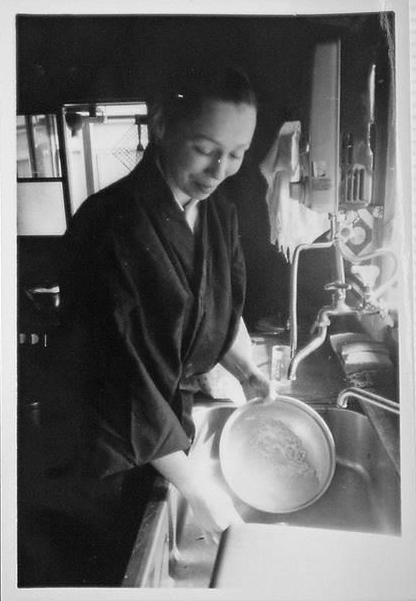

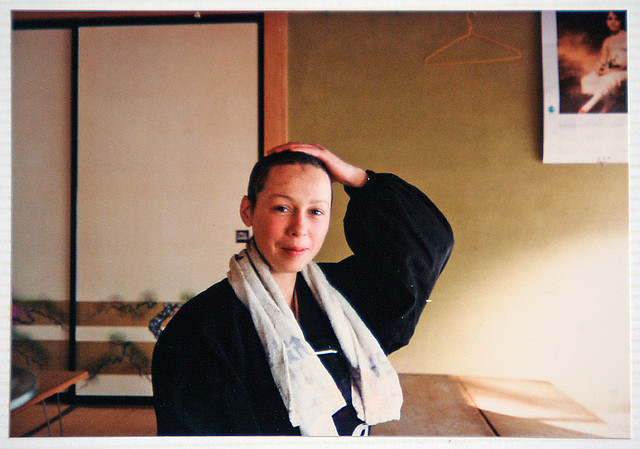
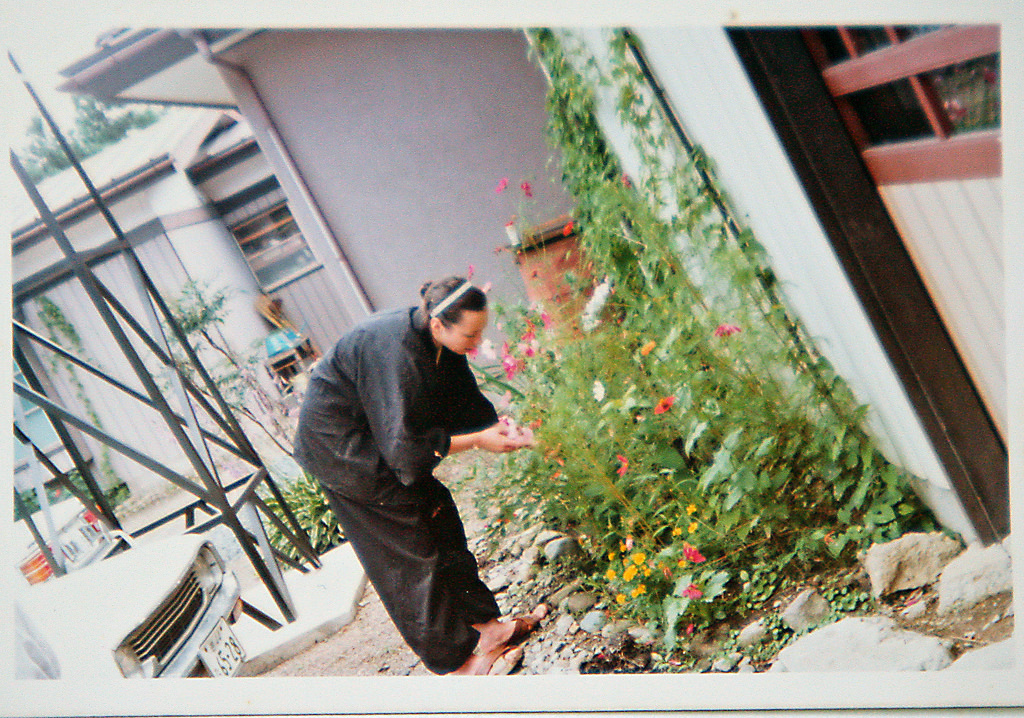
quote from "Pure Heart, Enlightened Mind"
※ The words of red are relative to Kannonji Temple.
禅学佳秀老師

伴鉄牛老師の弟子。15歳の時「沖ヨガ密教修道場」へ入門する。20歳の時、野口三千三先生に師事(芸大体育学教授 「野口体操」創始者)する。
22歳の時、駒澤大学中退し、23歳の時、「まあるい世界」ヨーガ教室を開催する。
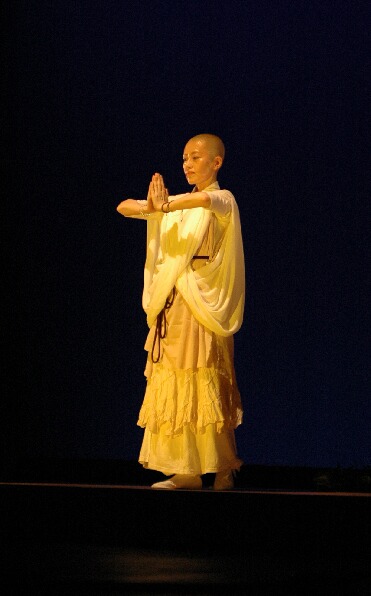 26歳の時、何人かの指導者に失望していたとき、
大井町線の駅で東照寺の看板を見つけ、外に求めるより坐禅しようと思い立ち即入寮したところ、思いがけず探し求めていた導師に
巡り逢うことができ、同年受戒(在家得度)をする。
30歳の時に、改めて伴鐵牛老師の下で出家得度、修行生活を始める。33歳の時、安泰寺 発心寺 仏國寺などを遊山した後、最乗寺に安居する。
35歳の時、下山し、その後、愚尚庵を開き、坐禅・ヨーガの道場として多くの弟子を育成している。
また、近年では各地のお寺で幻想的な法舞を披露し、坐禅・ヨーガ・舞など幅広く活躍されている。
26歳の時、何人かの指導者に失望していたとき、
大井町線の駅で東照寺の看板を見つけ、外に求めるより坐禅しようと思い立ち即入寮したところ、思いがけず探し求めていた導師に
巡り逢うことができ、同年受戒(在家得度)をする。
30歳の時に、改めて伴鐵牛老師の下で出家得度、修行生活を始める。33歳の時、安泰寺 発心寺 仏國寺などを遊山した後、最乗寺に安居する。
35歳の時、下山し、その後、愚尚庵を開き、坐禅・ヨーガの道場として多くの弟子を育成している。
また、近年では各地のお寺で幻想的な法舞を披露し、坐禅・ヨーガ・舞など幅広く活躍されている。
A disciple of Ban Roshi.When she was 15 years old, she entered "Oki Yoga esoteric Buddhism Monastery". At the age of 20, she studied under Mr. Noguchi Michimi. At the age of 22, she dropped out of Komazawa University, and when she was 23 years old, she will hold a Yoga Classroom "Marui Sekai". When she was disappointed with some leaders at the age of 26, she found a signboard of Toshoji temple at the station on the Ooimachi line and met ideal mentor so she immediately entered dormitory. At the age of 30, she again began stadying and training under Ban Roshi. When she was 33 years old, she studied at Anneiji temple, Hosshinji temple, Bukkokuji temple and Saijyoji temple. When she was 35 years old, she quit studying, and then she opened a "Gushoan" and trained many disciples as a dojo for Zen and Yoga. In addition, in recent years she showed fantastic Buddhism dance at temples in various places, and has been widely succeed such as zazen, yoga and dance.
2012年10月28日 観音寺 開山忌法舞
2015年6月27日 長野県 常福寺 お施餓鬼 奉納法舞
岩手県 観音寺








